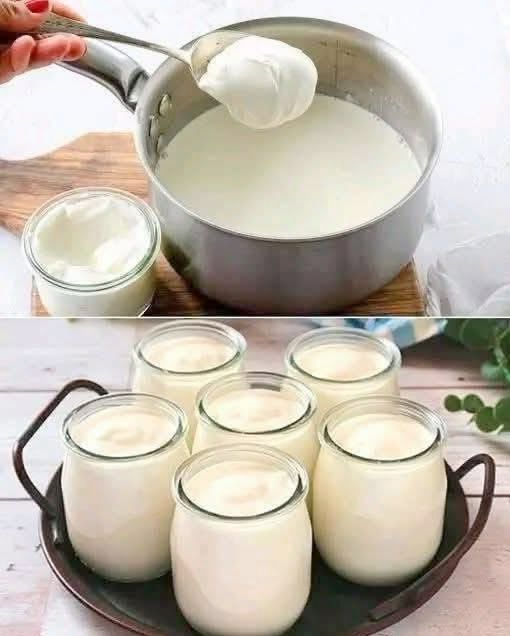ADVERTISEMENT
ADVERTISEMENT
ADVERTISEMENT
How to Make Homemade Yogurt: The Ultimate Guide
Introduction
Making homemade yogurt is easier than you think! With just two ingredients—milk and a yogurt starter culture—you can create a creamy, probiotic-rich yogurt right in your kitchen. Not only does homemade yogurt taste better than store-bought versions, but it also contains no added sugars, preservatives, or artificial flavors.
The key to great yogurt lies in the fermentation process, where beneficial bacteria transform milk into a thick, tangy treat. If you’re curious about the science behind yogurt fermentation, it explains how temperature and live cultures play a crucial role. Additionally, homemade yogurt is packed with probiotics, which can boost gut health and immunity—learn more about the health benefits of probiotic yogurt.
Ingredients & Equipment
Before you start, gather these essentials:
Ingredients:
-
Milk – Whole milk makes thick yogurt, but you can also use skim, raw, or plant-based milk.
-
Yogurt starter culture – Either a tablespoon of plain yogurt with live active cultures or a commercial yogurt starter packet.
Equipment:
-
Heavy-bottomed pot – Prevents milk from burning.
-
Thermometer – Ensures accurate temperature control.
-
Whisk – Helps mix the starter culture evenly.
-
Jars or containers – For storing your yogurt.
-
Strainer (for Greek yogurt) – Removes excess whey for a thicker texture.
Step-by-Step Homemade Yogurt Recipe
1. Heat the Milk
-
Pour your milk into a clean, heavy-bottomed pot and set it over medium heat.
-
Heat until it reaches 180°F (82°C), stirring occasionally to prevent scorching.
2. Cool the Milk
-
Remove from heat and allow it to cool to 110°F (43°C).
-
Speed up cooling by placing the pot in a cold-water bath.
3. Add the Starter Culture
-
In a bowl, mix 2 tablespoons of cooled milk with your yogurt starter culture.
-
Stir this mixture back into the pot, ensuring even distribution.
4. Incubate the Yogurt
-
Pour the milk into clean jars and cover with lids.
-
Keep jars at 100-110°F (37-43°C) for 6-12 hours using one of these methods:
-
Oven with the light on
-
Instant Pot on yogurt setting
-
Yogurt maker
-
Wrapped in warm towels in an insulated cooler
-
5. Refrigerate & Enjoy!
-
Transfer to the fridge for at least 4 hours to set.
-
Your homemade yogurt is now ready—enjoy it plain or with honey, fruits, or granola!
How to Make Greek Yogurt & Flavor Variations
For Greek yogurt, strain your homemade yogurt using cheesecloth or a fine-mesh strainer for 2-4 hours. This removes excess whey, making it thicker and creamier. Follow this step-by-step Greek yogurt straining guide for best results.
Flavored Yogurt Ideas:
-
Sweetened yogurt: Add honey, vanilla extract, or maple syrup.
-
Fruit yogurt: Blend with berries, mango, or banana.
-
Savory yogurt: Mix in garlic, herbs, or lemon juice for a delicious dip.
How to Store & Preserve Homemade Yogurt
-
Refrigerate in airtight containers for up to 2 weeks.
-
Use your homemade yogurt as a starter for the next batch (up to 4-5 times).
-
If your yogurt develops a bad smell, mold, or excessive whey separation, discard it.
Health Benefits of Homemade Yogurt
-
Rich in probiotics – Supports gut health and digestion.
-
No artificial additives – Healthier than store-bought options.
-
High in protein – Especially in Greek yogurt.
-
Good source of calcium – Supports bone health and muscle function.
Frequently Asked Questions (FAQs)
1. Can I make yogurt with plant-based milk?
Yes! You can use coconut, almond, soy, or oat milk, but you may need a vegan yogurt starter or thickener like agar-agar.
2. Why is my yogurt runny?
Your yogurt may be too thin due to low incubation temperature, short fermentation time, or using ultra-pasteurized milk.
3. Can I make yogurt without a yogurt maker?
Absolutely! Use an oven, Instant Pot, or wrap jars in warm towels to maintain the right temperature.
4. How long should I ferment my yogurt?
6-12 hours is ideal—shorter times result in a milder flavor, while longer fermentation creates a tangier, thicker yogurt.
5. What’s the best milk-to-starter ratio?
Use 1 tablespoon of starter per 1 quart (4 cups) of milk for the best consistency.
Final Thoughts & Tips
Making homemade yogurt is easy, fun, and rewarding! Once you master the basics, you can experiment with different flavors, milk types, and fermentation times to create the perfect yogurt for your taste.
Try this recipe and let us know how it turned out! What’s your favorite way to enjoy homemade yogurt?
ADVERTISEMENT

